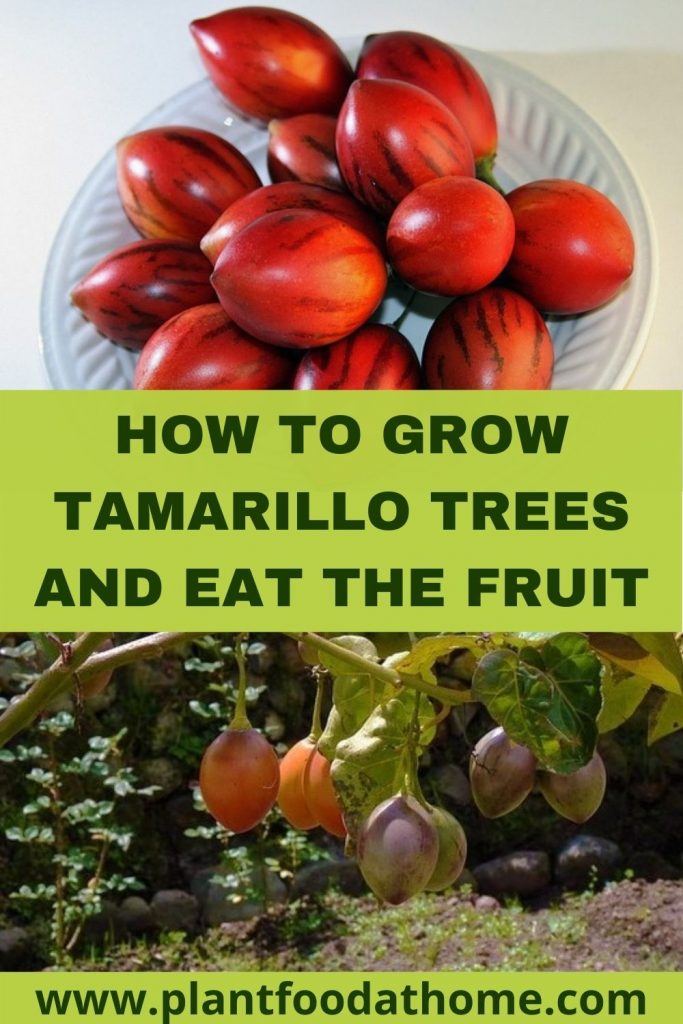If you’re tired of growing the same old garden variety tomatoes year after year, the tamarillo is something unique to introduce to your home garden. Known as the tree tomato, the fruit of these trees is small and oval-shaped. They look very much like a mini roma tomato or plum tomatoes. Read on to find out how to grow tamarillo trees and how to eat the fruit.
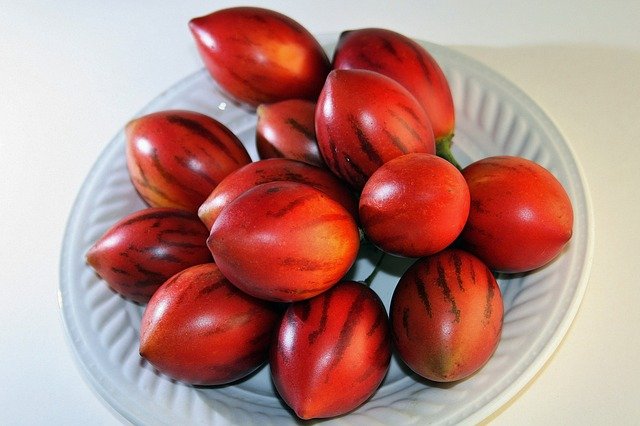
Part of the nightshade family, the tamarillo tree has a semi-woody trunk and fragrant pink flowers. They can be grown as a small tree or a shrub. The tamarillo fruits vary in color from yellow to red to dark purple, depending on the variety you grow.
Tamarillo is related to tomatoes but don’t let the name “tree tomato” fool you. They do not taste like tomatoes. And these fruits are not interchangeable in recipes! Except if you’re making salsa. Then feel free to swap to your heart’s content.
Table of Contents
- Tamarillo Varieties
- Ideal Growing Conditions for Tamarillo Trees
- How to Plant a Tamarillo Tree
- Propagating Tamarillo Trees
- How Long Does it Take a Tamarillo Tree to Produce Fruit?
- When to Harvest Tamarillo Fruit and How
- How to Eat Tamarillo Fruit
- Recipes Using Tamarillos
- Storing Tamarillo Fruit
- Pests and Disease
- Conclusion
- Some Favorite Gardening Products
Tamarillo Varieties
There are many varieties of tamarillo, and more are created each year. Agriculturists are experimenting with different hybrid types to try to increase hardiness.
The two most common varieties of tamarillo are red and yellow. These are the two kinds you’d find in a nursery. The significant difference between the two is taste. Both are worth growing, as they’re delicious.
The yellowy-orange has a sweeter taste, while the reds are tangy-tart. Depending on your preferences, there are recipes suited to either one.
Tamarillos grow to between 6.5 and 16 feet (2-5 meters) tall by 6.5 feet (2 meters) wide and can be kept smaller when planted in a container at 6.5 feet (2 meters). The fruit is oval egg-shaped growing around 1.5-4 inches (4-10cm) long.
Ideal Growing Conditions for Tamarillo Trees
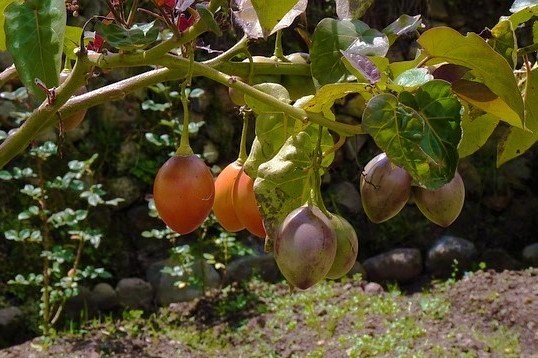
The tamarillo tree is native to South America. It’s popular in sub-tropic countries like Peru and Columbia. Commercially, Columbia is the number one producer.
Climate for Tamarillo Trees
Tamarillo trees grow best in areas where the temperature never falls below 50°F (10°C). These trees can tolerate a low of 28°F (-2°C); however, you’ll find dieback on the branches and leaves starting to fall off. By 26°F (-3°C), all the leaves have fallen. Sadly, at this point, your tree is likely beyond help.
The tamarillo tree can be grown in containers, so if you live in an area with winter temperatures below 50°F (10°C), you can bring the tree inside for the winter.
Soil for Growing Tamarillo Trees
Tamarillo trees are not very particular about the soil they grow in, though it should be well-drained. A balanced organic fruit tree fertilizer should be added to the soil quarterly. Ideally, pH levels should be between 5-8.5.
Watering Tamarillo Trees
The most important thing is to maintain moisture levels. With a shallow root system, they are not at all drought-resistant and need daily water. Mulching is beneficial to help the soil retain moisture. Mulching will also inhibit weed growth. As soon as the topsoil is dry to touch, water should be added.
Standing water can lead to root rot, so excellent drainage is a must.
Sunlight for Tamarillo Trees
Tamarillo trees prefer full sun. In extreme heat zones, partially shaded is OK, as well. Because of the shallow roots, some wind protection is needed. The trees are not particularly stable in strong winds.
Pruning Tamarillo Trees
Pruning on an annual basis will help your tree produce larger and better-tasting fruit year after year. Often the second fruiting from the same branch is of lower quality. Pruning will prevent this.
Regular pruning will also help shape the tree and encourage lower branching. The lower branching is ideal for smaller gardens where size is a concern. You can also use pots to retard growth. Leaving the plant in a medium-size pot, around 16 inches (40 cm), will give you a smaller, shorter tree, though fruit yield will also be smaller.
Tamarillo trees can get leggy, which will give a low-quality fruit. To prevent this, you can chop the top off at your desired height. Regular pruning will also help prevent this. I suggest head height as this makes harvesting easier. This will encourage lower branching and larger fruits, too.
How to Plant a Tamarillo Tree
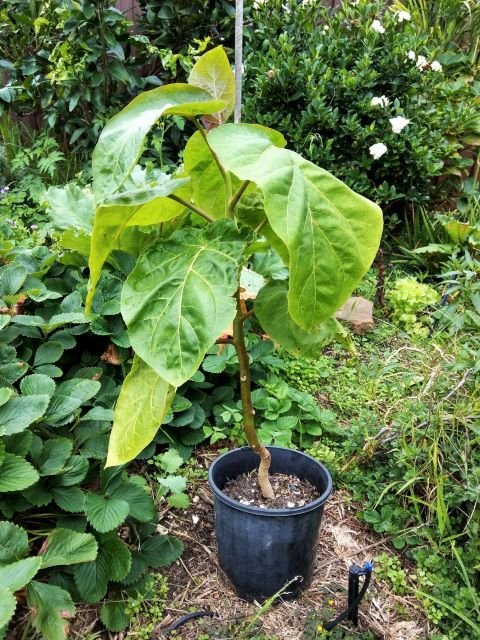
If you choose to plant your tamarillo tree in containers, you need at least two inches of drainage material in the bottom of the pot. For the soil, a citrus tree mix is best. If the citrus variety is not available, fruit tree soil will work well.
If you’re planting outside, you need six to ten feet (1.8-3 meters) between each tree. The rows should be at least 15 feet (4.5 meters) apart. If the planting area is prone to puddling, you can build the soil up and plant in small mounds. I’ve found a foot high by three feet wide (30 cm high by 90 cm wide), with the tree planted in the center works best.
Whether you plant in your garden or a container, bone meal can be added at the time of planting. Bone meal is made from the leftover bones, usually beef, in animal slaughterhouses. The bones are boiled and pulverized. They’re an excellent source of phosphorus, nitrogen and calcium. Alternatively, aged manure and compost also provide increased soil fertility and essential soil nutrients.
Once the soil has been prepared, dig a hole the size of the tamarillo tree pot. If the soil is particularly dry, as was the case of mine at the time of planting, give it a water.
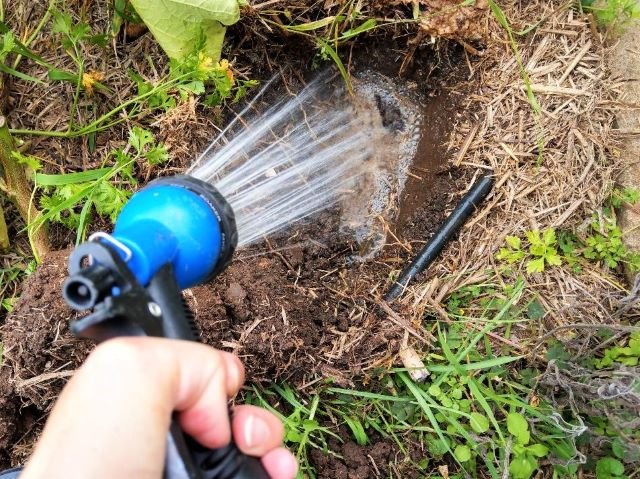
Place the tamarillo tree in the newly dug hole and backfill with soil.
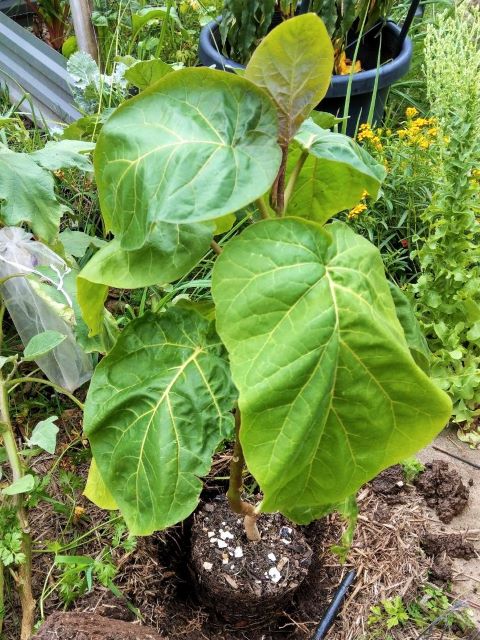
Watering in well, cover with mulch and consider a stake or other support to stop any damage from winds. Remember tamarillo trees can be fragile to strong winds so make sure you are planting into a protected area.
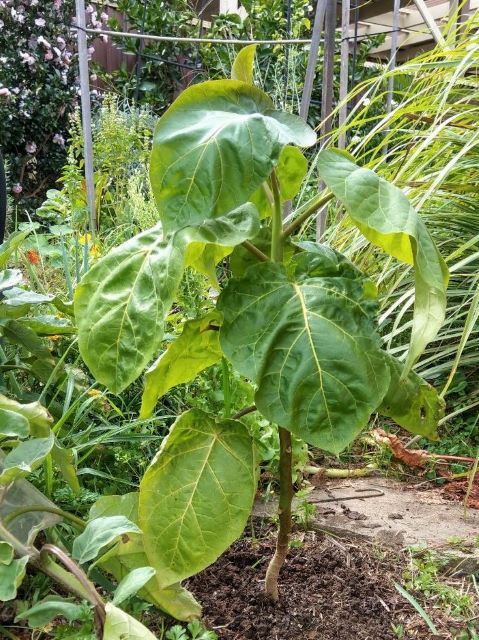
Propagating Tamarillo Trees
Tamarillos can be grown from either seed or cutting. Cuttings can be started in water or soil and are best taken from the trunk of the tree. Remove the majority of the leaves, ensuring there are a number of leaf nodes where the roots can develop. One or two leaves can remain and if they are larger leaves they can be cut in half to reduce the energy being used by the cutting.
When grown from a cutting, you can transplant the tamarillo to the garden when the cutting has grown around 5 inches (12cm), though some gardeners report simply popping their cutting directly in the ground and their cuttings growing into healthy tamarillo trees. You’ll find cuttings will branch earlier and give you a more shrub-like appearance. This is good for urban gardening or small plots.
Seedlings will need to be protected for a longer period. They can be transplanted when they are around 3 feet (90 cm) outside or in a suitable container or pot. These seedlings are very frost sensitive during these early stages of growth. If there’s a possibility of an overnight frost, do not transplant until this risk is over.
It may be hard to find seeds for purchase at a local nursery. Because cross-pollination isn’t needed for this plant, you can use seeds from tamarillos purchased at a store. Check the Latin section or specialty grocery stores.
Rinse the seeds off and dry between paper towels. Then plant in a seed tray or something similar. Water, lots of warmth, and sunlight, and you should see sprouts in 7 to 9 days.
How Long Does it Take a Tamarillo Tree to Produce Fruit?
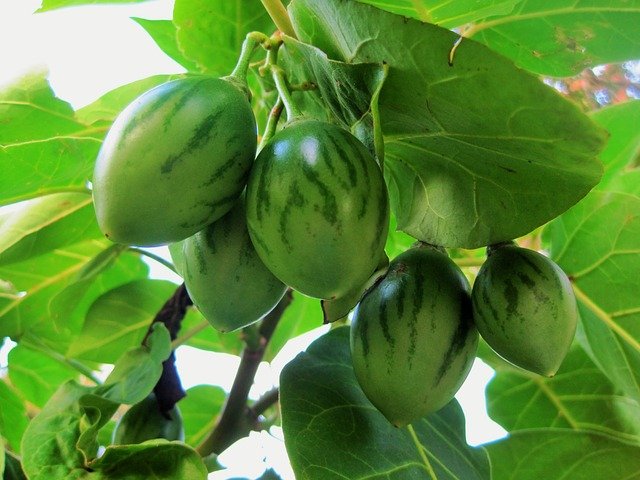
It will be around 1.5 to 2 years before your tamarillo tree will give fruit. If you live in the subtropical areas, you could see fruit as soon as 12 months. Variations in temperature, water, and growing conditions will affect how soon your tree begins bearing fruit.
The best producing years begin when the tree is around four years old. On average, you can expect the tree to produce fruit for a few years. If you start noticing your tree slowing down, it’s time to take a cutting or save some seeds.
The life expectancy of your tamarillo tree will vary depending on the temperature and growing conditions in your locale. Though farmed trees from South America can live up to 12 years, home gardeners in North America or Europe can expect around four to five years.
Each tree can produce up to forty pounds of fruit per year. That’s a lot of tree tomatoes! Thankfully, they’re tasty and won’t go to waste. Each flower or cluster will produce one to six fruits.
From flowering, you can expect to see ripe fruit in about 25 weeks.
When to Harvest Tamarillo Fruit and How
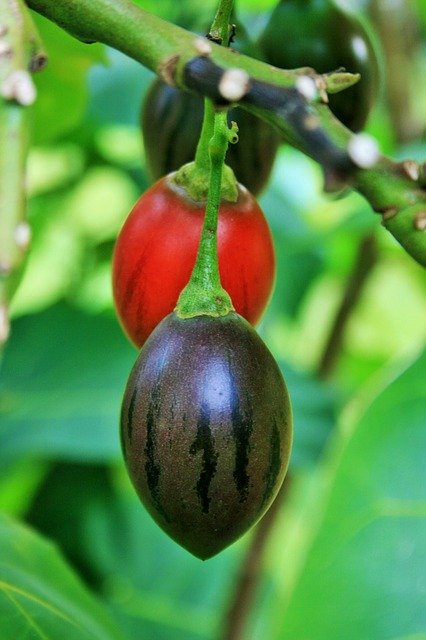
These fruits should be harvested only when fully ripe. Unripened tamarillo tends to be less palatable and can cause stomach upset if eaten.
In areas with stable year-round temperatures, the tamarillo will produce fruit year-round. Not all fruits will ripen at the same time. Multiple harvests are needed.
In areas with pronounced winter seasons, the fruits will ripen in the fall. Again, not all will ripen at the same time, and multiple harvests are needed.
As soon as ripe, the tamarillo fruit should be harvested. The branches can be fragile and can break with the weight of the fruit. After you’ve taken fruit from that branch, the branch can be pruned to encourage new growth in the next season.
They can be pulled off the trees when ripe or snipped clean off. Pro tip: If you use you’re pruning shears to snip the fruit, you can prune the branch back at the same time, saving you a step and time.
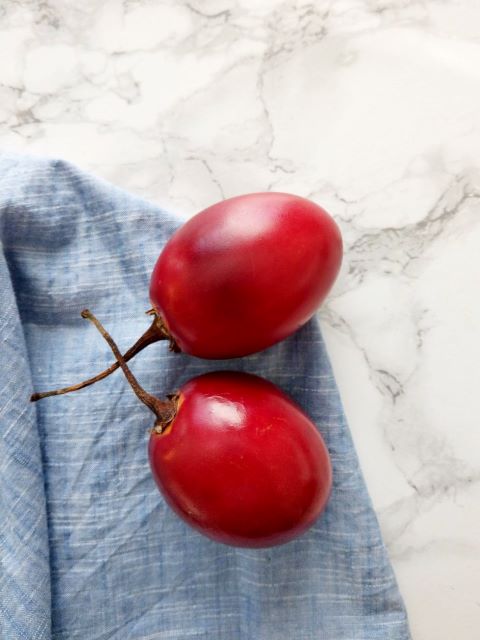
How to Eat Tamarillo Fruit
Tamarillo flesh is firm. The skin is edible but usually discarded due to the bitter taste. However, the seeds are edible and can be scooped out with the flesh. The tamarillo fruit can be eaten fresh and raw.
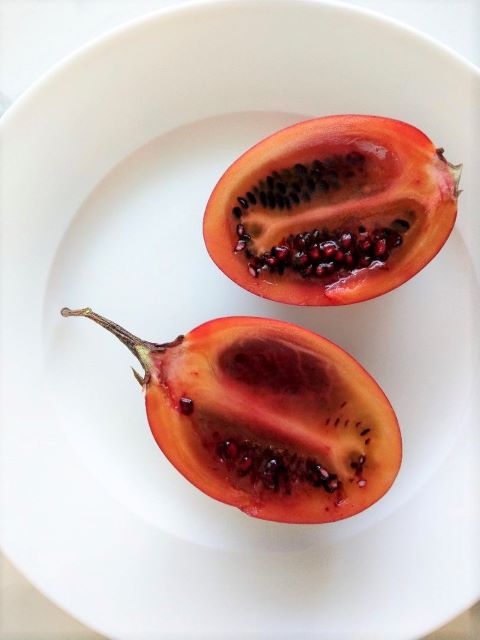
The yellow varieties of tamarillo are sweeter but still tangy, like citrus fruit. These yellow ones have a taste that is similar to apricot or mango. On the other hand, the redder tamarillo varieties are slightly bitter. These fruits have a tangy tart taste that makes them perfect for salsas and chutneys. The red fruits can also be made sweeter with a sprinkle of sugar.
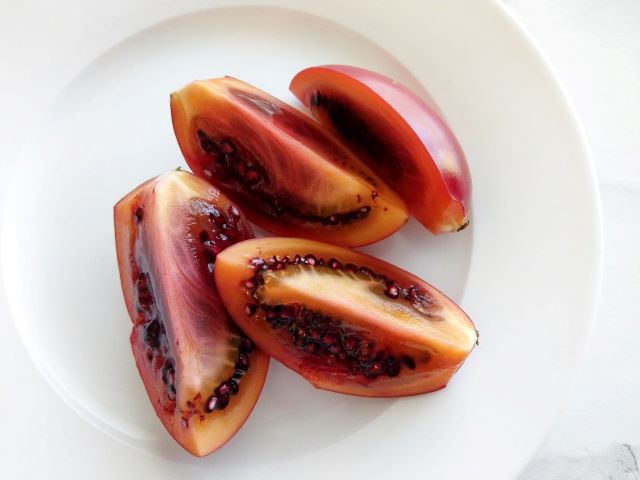
Tamarillos are also delicious served sliced and chilled alongside a cheese platter! The tang of tamarillo pairs nicely with intensely flavored cheeses.
And stewed tamarillos are delicious served with ice cream.
Recipes Using Tamarillos
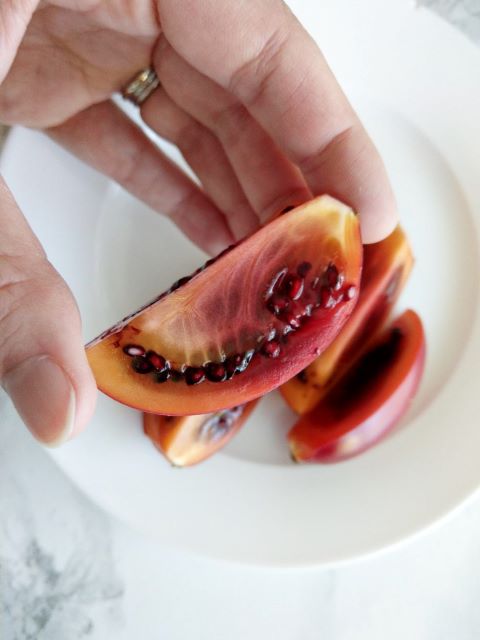
Food.com has an excellent chutney recipe that uses tamarillo, red chilis, olive oil, sugar, and white wine vinegar. Chutneys are great to serve with meats and can be thinned and used as a glaze during roasting. They’re also great for dipping any kind of bread in!
Aji hot sauce is a mild to medium-hot sauce from Ecuador made with yellow tamarillos. It’s extremely popular in South America and for a good reason. Pair with plantain empanadas for a meal fit for a king!
Tamarillo is also popular as a juice. To prepare, rinse the fruit in cool running water. Using a saucepan, cover with water and simmer for 10 mins. At this point, the skins will be starting to peel. Finish peeling and chop them up. Then, follow this recipe for the Columbian Tamarillo Juice.
Because of a tamarillo fruit’s lovely tartness, these are delicious when paired with a sweet dessert recipe. Try this one for Poached Tamarillos. Tamarillo slices poached with honey and vanilla served warm on ice-cold vanilla ice cream. Yummy!
Also, from Ecuador, this salsa made with tamarillo’s is fantastic. The lime juice and cilantro really make it pop. It’s a flavourful mild salsa. One commenter from Epicurious.com writes that she lives in Ecuador, and this recipe is better than the traditional version she was taught!
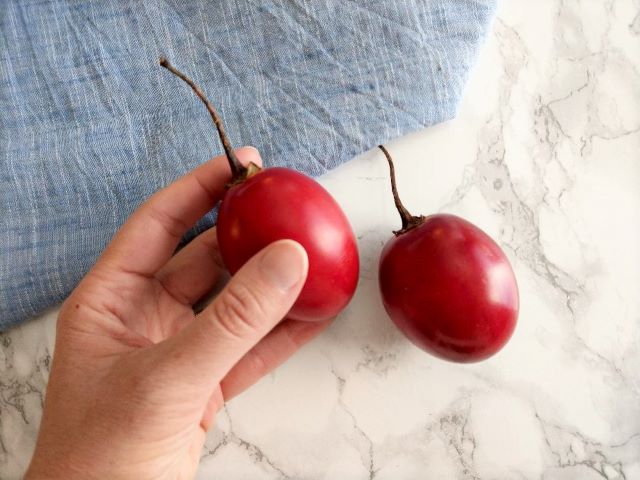
Storing Tamarillo Fruit
The fruit of the tamarillo tree is best eaten straight away while fresh and ripe. It can be stored in the fridge for up to two weeks.
Commercially, New Zealand has developed a cold dip process that allows for room temperature storage for six to 10 weeks. That sort of longevity isn’t possible for the home gardener. Tamarillos are extremely popular in New Zealand.
Salsas, sauces, and chutneys made with the tamarillo fruit can be canned using a pressure canner and then stored for many years on a shelf.
Dehydrating the fruits does not work very well. The tart taste gets concentrated, becoming unpleasant. The seeds become tough and chewy. However, turning your tamarillo into fruit leather is a delicious alternative that allows you to preserve your tamarillo harvest.
Tamarillos can be stewed and frozen for eating later.
Pests and Disease
The tamarillo is susceptible to aphids and fruit flies. Neem oil is effective at both preventing and treating these pests.
Neem oil is a naturally occurring pesticide from the seeds of the Neem Tree. The neem oil interferes with the hormones of insects and interrupts the breeding cycle. Also, it can prevent insect feeding. Neem oil is available as sprays, powders, and granules. You can purchase it at most garden stores and big-box retailers or online here: Horticulture Neem Oil.
Powdery mildew can grow on the leaves, flowers, and branches. Often, this is caused by overcrowding and high humidity, with lower air circulation. You can use apple cider vinegar to treat this.
Mix 3 tablespoons of vinegar (5% acetic acid) with one gallon of water and spritz on the affected leaves. Be careful to maintain this ratio when mixing the solution in different quantities. Vinegar is effective at treating mildews; however, at higher concentrations, the leaves can burn.
You can use a DIY MilK Spray Recipe for Powdery Mildew here.
It is also susceptible to damage from nematodes and tomato worms. But the pests are not attracted to the tree usually. When you plant the trees outside, avoid areas that have previously grown tomatoes, and you should be safe.
Otherwise, tamarillo trees are low-maintenance fruit trees that resist most diseases and pests.
Related: Tamarillo Tree Leaves Turning Yellow: Causes And Solutions
Conclusion
There are many, many varieties of fruit trees you can plant to develop your home garden and tamarillo trees make an exciting addition. Even though grocery stores have a narrow focus, that doesn’t mean your garden has to be too. So experiment and grow a diverse range of edibles in your garden!
Some Favorite Gardening Products
- Horticultural Neem Oil
- King Bird Raised Garden Bed
- Felco Garden Pruners
- AeroGarden Bounty Indoor Hydroponic Herb Garden
- Sloggers Waterproof Garden Gum Boots
Further Reading:
- How to Grow a Persimmon Tree for Delicious Persimmon Fruit
- Pepino Melon: How To Grow The Plant And Eat The Fruit
- How to Grow a Mango Tree: Planting, Caring and Harvesting
- How To Grow A Mango From Seed And By Grafting
- Growing Feijoa Pineapple Guava Trees and Eating Feijoa Fruit
- How to Grow Kumquats: Complete Guide To Kumquat Tree Care
- How to Grow Watermelons: Planting, Caring and Harvesting Watermelons
- Why Is My Bay Tree Dying? Causes and Solutions
